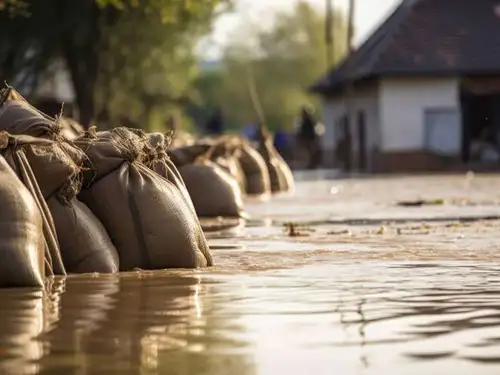States we serve: VA, MD, DC, PA, NC, SC, and WV
Emergency Preparedness Information for Homeowners
June 21, 2024 · 5 minute read · Personal Lines

A loss can be sudden and confusing. Being prepared for an emergency is the best advice we can give to our customers. Knowing the next steps to take and who to call can help prevent further damage, reduce the time it takes to recover, and help to preserve your home and personal belongings as best as possible.
Have questions?
Contact us today.
Phone: (703) 471-0050
Please note: coverage cannot be bound or altered online. A service representative will need to contact you to finalize your request.
Steps that can help avoid or minimize a future loss
Perform regular yard maintenance: Care for trees and shrubs that are close to the home. To reduce risk, make sure garden mulch is not placed against the siding. Check for damaged and downed limbs and rotted portions of a tree and remove them.
Install detection devices: Heat, water, and security system monitors notify you in the event of a potential risk so you can take preventative steps. In case of lightning, consider surge protectors for high-value items that are plugged in.
Locate your water main: First, locate the water main in your home. If you need assistance, consider contacting a plumber who can help you to operate the main. Add a tag or marker to help you remember where it is located. When on vacation, consider turning the water off to your washing machine. If you have a water leak in your home, the quickest step to reduce damage is to shut off the water main.
Secure your valuables: Put important papers and treasured items in a locked, waterproof, and fireproof container. Compile a home inventory list that can be accessed in case of loss. We recommend taking a video of your home, room by room. Keep a digital copy of the list and video that can be accessed from anywhere.
Monitor smoke and carbon monoxide detectors: Change smoke and carbon monoxide detector batteries annually and test them at least twice a year. We recommend replacing the detectors every seven to ten years.
Keep fire extinguishers handy: Have fully charged fire extinguishers on every level of your home and one extinguisher in your kitchen. Check the devices at least once a year to ensure they are still charged, as they can deteriorate over time.
Maintain a consistent indoor temperature: To avoid frozen pipes, keep your home between 55-65 degrees, even when you are not home. Be aware of pipes that go through cooler parts of your home and consider wrapping them in towels or insulation.
Perform regular home maintenance: Have HVAC and heating systems serviced and cleaned annually. Regularly remove lint from dryer vents and check washing machine hoses for bulges and proper connections. Inspect and clean chimneys every year.
Install a sump pump: If you are in a low-lying or flood-prone area, add a sump pump with a battery backup power source to keep the pump running during power outages.
Mitigation Tactics
If you are experiencing an emergency in your home, there are ways to help mitigate the loss and reduce the severity of the damage. While it is best to call local experts and inform your insurance agent right away, there are a few steps you can take immediately – once it is safe to do so.
Water damage
- Shut off the water main if the water is coming from the home.
- Add a tarp or cover to the home if it is safe to do so and the water damage comes from the outside.
- Remove excess water from the home if possible. A wet vac, towels, and buckets can help.
- Take photos of the damage.
- Call your local contractor.
- Call a water mitigation company if you are unable to control the water.
Fire
- Evacuate the home as quickly and safely as possible.
- Call your local fire/police department.
- Add tarping or boards to the home to reduce any weather damage, theft, or other future risks to the property.
- Call a local contractor to assess the property.
- Reach out to a fire restoration company to help with any smoke or fire damage to the home or contents.
- Gather valuables from the home, including driver’s licenses, passports, valuables, and collectibles to help reduce the risk of theft.
- Take photos of the impacted areas.
Tree on your home or vehicle
- Get out of the home and/or vehicle if safe to do so.
- Call a local arborist if you are not at risk. If there is risk, call your local police/fire department to assist.
- Tarp any holes or openings that the tree caused to avoid further damage.
- Gather valuables and move them to a safe location.
- Take photos of the damage.




